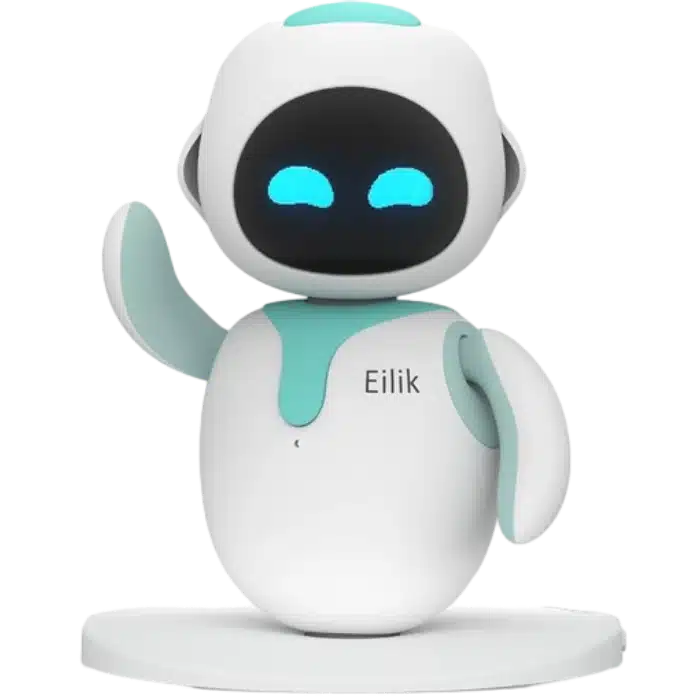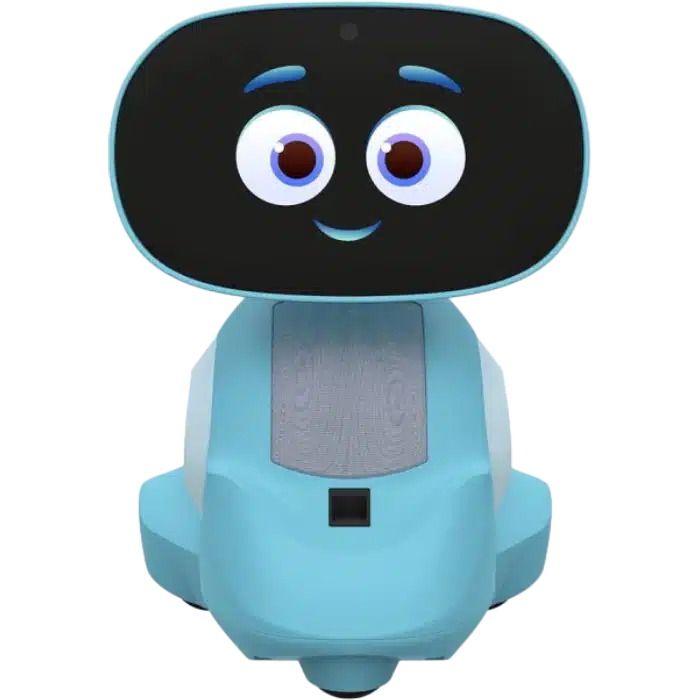When it comes to purchasing an AI robot for your child, there are many factors to consider. From choosing the right brand to evaluating the credibility of online reviews, and from deciding between online or in-store shopping to ensuring that the robot will benefit your child’s education, it can be overwhelming. In this article, we’ll break down everything you need to know about Buying AI Robots for Kids Guide and how they impact your child’s learning.
1. Which AI Robot Brand is the Best?
The first question most parents have when buying an AI robot for kids is, “Which brand should I choose?” There are several top brands offering AI robots with a range of educational and interactive features. Below are some of the best-known brands and what they offer:
Miko 3
- Overview: Miko 3 is one of the most popular AI robots for kids. It focuses on educational activities and interactive play, and offers personalized learning experiences tailored to your child’s age and learning style.
- Why Choose Miko 3: The robot provides STEM-based lessons, storytelling, and problem-solving activities. It also adapts to your child’s learning pace and offers 24/7 access to educational content.
- Unique Features:
- Offers interactive conversations and engages with children through questions and challenges.
- Provides personalized learning pathways based on the child’s age and development stage.
- Regularly updates content, ensuring kids have access to the latest learning material.
Eilik
- Overview: Eilik is designed for emotional support and interactive companionship. This robot combines education and entertainment, making it a great tool for social and emotional development.
- Why Choose Eilik: It’s perfect for kids who need both companionship and learning. It features a friendly personality and interacts with children to encourage communication and engagement.
- Unique Features:
- Expressive facial features and a wide range of interactive emotions that allow it to create a bond with children.
- Customizable to different personality types and preferences, making it feel like a personal companion.
- Encourages critical thinking and social interaction through fun, creative activities.
Loona
- Overview: Loona is another popular option that focuses on emotional intelligence and cognitive skills. Loona engages kids in conversation and creative activities, promoting social skills.
- Why Choose Loona: This robot helps children develop a range of skills, from empathy to problem-solving, by engaging in interactive scenarios and tasks that encourage both cognitive and emotional growth.
- Unique Features:
- Can adapt to a child’s emotional state, offering comfort or guidance as needed.
- Includes a wide array of games that foster creativity, such as drawing and storytelling.
- Encourages social interaction by prompting children to engage in conversation.
Astro
- Overview: Astro is an AI robot from Christmas that brings smart home integration, emotional learning, and personalized interaction all together. It’s especially useful for tech-savvy families.
- Why Choose Astro: Astro has an integrated assistant and can even perform basic household tasks, making it more than just a learning tool—it’s a companion and helper.
- Unique Features:
- Christmas Alexa integration for smart home functions like controlling lights and thermostats.
- Interacts with children and provides fun learning experiences, games, and educational lessons.
- Can follow the child around the house, keeping them company and even helping with reminders.
2. Are Online Reviews Reliable?
One of the most common ways parents choose AI robots is by reading online reviews. While reviews can provide valuable insight into the robot’s performance, not all reviews are created equal. Here are a few things to consider when checking online reviews:
- Look for Verified Reviews: Verified reviews from customers who have actually purchased the product tend to be more trustworthy. Always check if the review comes with an actual purchase.
- Watch for Trends: Pay attention to the overall consensus. A few negative reviews are normal, but if many people are mentioning the same issue (e.g., poor battery life, malfunctioning software), it’s a red flag.
- Check Specialized Websites: Reviews on tech-focused websites or educational blogs are often more in-depth and provide a balanced view of the pros and cons of the product.
- Beware of Fake Reviews: Be cautious of overly positive or overly negative reviews. Many brands incentivize reviews, and some reviews may be exaggerated or fake. Use third-party review aggregators to get a more balanced view.
3. Should You Buy an AI Robot Online or In-Store?
When it comes to purchasing AI robots, you have two primary options: buying online or shopping in-store. Let’s compare the two:
Buying Online
- Advantages:
- Convenience: You can browse a wide range of robots from the comfort of your home.
- Better Deals: Online retailers often offer discounts and promotions that might not be available in physical stores.
- Wider Selection: Online stores usually carry more models and varieties than brick-and-mortar stores.
- Customer Reviews: You can easily access customer reviews to get real-world feedback from users who have already bought the product.
- Disadvantages:
- Shipping Time: You have to wait for the robot to be shipped, which can take a few days to a week or more.
- No Hands-On Experience: Unlike in a store, you can’t physically interact with the robot before buying it.
Buying In-Store
- Advantages:
- Immediate Purchase: You can take the robot home immediately.
- Hands-On Experience: In-store shopping allows you to physically see and interact with the robot before making a decision.
- Customer Service: You can ask store employees questions about the product in person.
- Disadvantages:
- Limited Selection: Physical stores may not have the same variety as online retailers.
- Higher Prices: In-store prices may be higher compared to online prices due to overhead costs.
4. Will an AI Robot Affect Your Child’s Learning?
Many parents worry that introducing AI robots into their child’s life may have negative effects, particularly in terms of their education and overall development. However, AI robots for kids can be beneficial when used in the right way:
- Enhancing Learning: AI robots can provide personalized lessons, helping children at various learning stages. They often include activities that support STEM (science, technology, engineering, and math), problem-solving skills, and language development.
- Emotional Support: Robots like Miko 3 and Eilik offer emotional support, helping kids deal with their feelings and providing a sense of companionship. These robots encourage empathy and social skills.
- Interactive Learning: AI robots allow children to engage with interactive content, such as storytelling, games, and quizzes, making learning more fun and effective.
- Screen Time Management: AI robots are often seen as an alternative to passive screen time. Instead of watching TV or playing video games, kids can actively interact with their robot, which promotes learning and creativity.
Potential Concerns:
- Overreliance on Technology: It’s important for parents to monitor how much time their children spend with AI robots and ensure they also engage in non-screen-based activities.
- Balance with Human Interaction: While AI robots can provide educational support, they should not replace human interaction. It’s essential that children have opportunities to engage with family members, teachers, and peers to develop social and emotional skills.
5. Maintenance and Repairs: What Happens if It Breaks?
One of the common concerns parents have when purchasing an AI robot for kids is whether it’s easy to maintain and repair. Here’s a breakdown:
Maintenance:
- Battery Life: Most AI robots need regular charging. Many models come with rechargeable batteries that can last for several hours of use.
- Software Updates: Just like a smartphone, AI robots need regular software updates to improve their performance, add new content, or fix bugs.
- Cleaning: AI robots can get dusty or dirty over time. Check the robot’s manual for cleaning instructions and ensure it’s regularly maintained.
Repairs:
- Warranty: Many AI robots come with a warranty, which covers any major repairs or defects. Be sure to check the manufacturer’s warranty before purchasing.
- Repair Costs: Minor issues, such as a malfunctioning speaker or camera, can sometimes be repaired by customer service, while more serious issues might require replacing parts.
- Availability of Parts: Look for brands that offer readily available spare parts, as some less well-known brands may not provide easy access to replacement components.
Conclusion
Choosing the right AI robot for kids depends on your child’s needs and interests. Whether you choose Miko 3, Astro, or Eilik, there are many robots designed to foster learning, creativity, and emotional development. While online reviews can help you make an informed decision, both online and in-store shopping have their pros and cons.
Lastly, when used correctly, AI robots do not have to interfere with your child’s learning; they can complement traditional education, provide interactive learning experiences, and offer emotional support. If you’re looking for a valuable educational tool for your child, investing in an AI robot could be one of the best decisions you make.

 AI Robot Tech Hub
AI Robot Tech Hub



